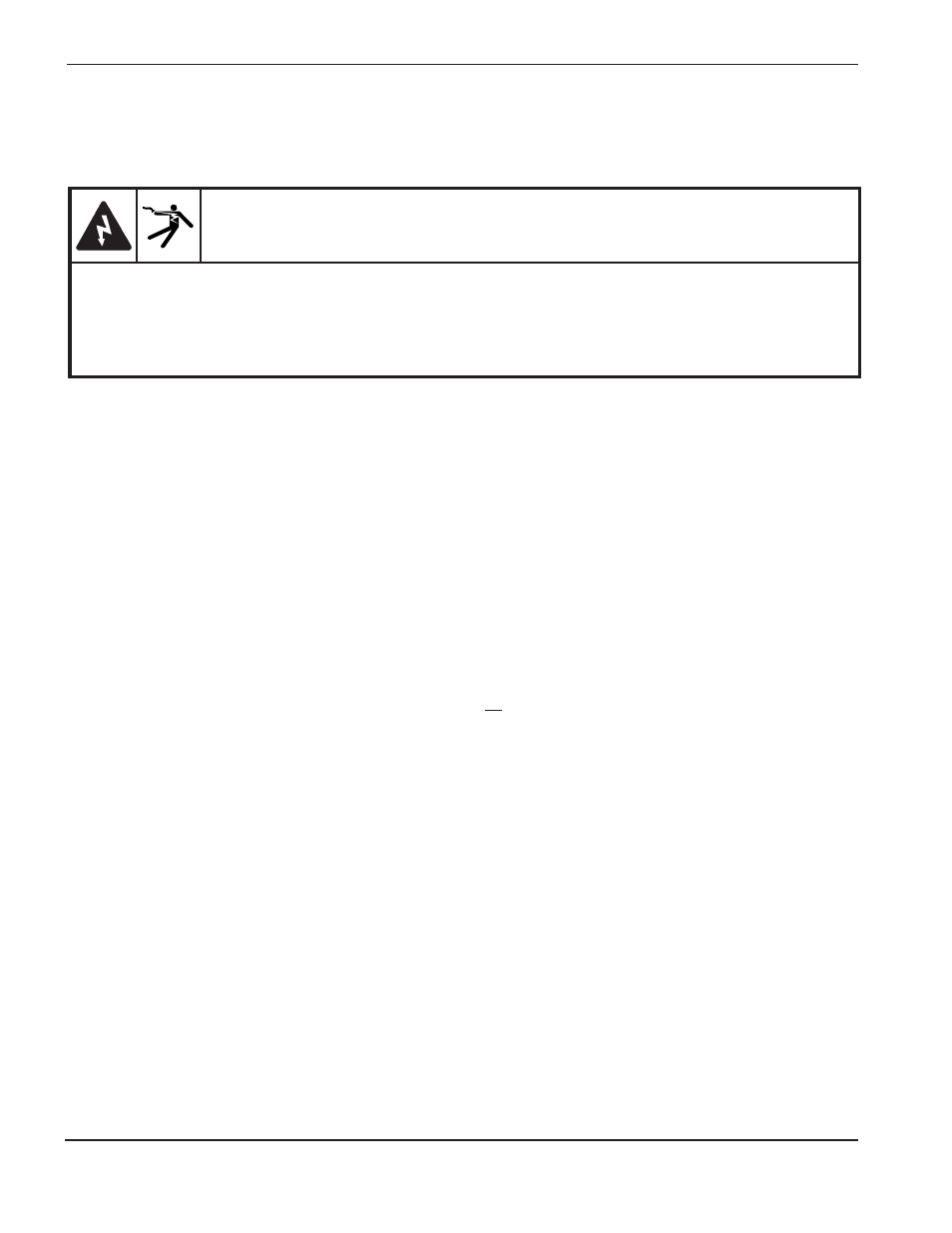Chopper module test procedure -38, Chopper module test procedure – Hypertherm HD4070 Rev.8 User Manual
Page 185

MAINTENANCE
5-38
HD4070
Instruction Manual
3
Chopper Module Test Procedure
Note:
Read voltages with a digital multimeter (DVM) capable of storing minimum and maximum readings.
1. Turn all power to the HD4070 system OFF.
Disconnect two terminals on line filter FL1, in the ignition console, to disable the solid-state ignition SSI1.
See page 6-9 in Parts List section for location of FL1.
2. Remove large fuses F1 & F2. Check to see if either fuse is open.
3. Place the positive lead of the DVM to the + side of the bridge and the negative lead to the – side of the bridge.
See figure on next page. Note that actual connection points are hidden by capacitor support bracket in figure.
4. Turn power to the HD4070 ON, and start up system. After the START command has been given, check voltage.
The input to the chopper at these points should be about +311 VDC. If the input is OK and corresponding fuse
F1 or F2 is blown, replace the chopper module. If there is no +311 VDC input, check the 3-phase AC input to the
chopper. Also, check main contactor (CON1) contacts, connections and associated wiring to the contactor.
Repair or replace any defective components. To check AC voltage to chopper, perform the same test again with
DVM in AC mode. Check voltage across A&B, B&C: Voltage should be 220 VAC.
5. If voltage from above step is +311 VDC and corresponding fuse is not blown, check output of choppers.
CH1:
•
Place the positive lead of the DVM at point (+) WORK on the chopper module (wire #3)and negative
lead at point (-) TORCH (wire #1). See the figure on following page.
•
Turn the system on and give the START command. After the START command has been given,
check the voltage. If the output from these points is +311 VDC, chopper is OK.
•
An alternate method of testing is to keep fuses F1-F4 in place and take voltage as above. A low
voltage reading with this method could mean a shorted torch.
CH2:
To check the output of CH2, repeat the above procedure for CH1 but put the positive lead of the DVM at
wire #8 and the negative lead at wire #6.
WARNING
SHOCK HAZARD: Use extreme care when working near the chopper modules. The large electrolytic
capacitor(s) (blue-cased cylinder(s)) store large amounts of energy in the form of electric voltage.
Even if the power is off, dangerous voltages exist at the capacitor terminals, on the chopper, and the
diode heatsinks. Never discharge any capacitor with a screwdriver or other implement...explosion,
property damage and/or personal injury will result.
